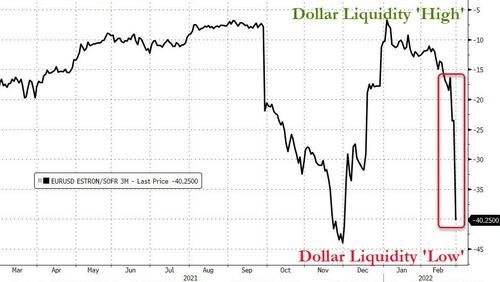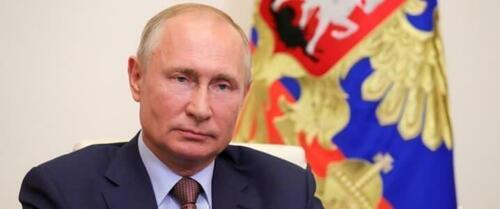New York Gov. Kathy Hochul yesterday announced that a statewide rule requiring students to wear masks in K–12 schools will be lifted this Wednesday. Hours later, New York Mayor Eric Adams said his city’s school mask mandate will end next Monday. California officials are expected to announce a similar change today.
Those moves come three weeks after several blue-state governors said they would stop requiring school districts to force masks on children. On Friday, the Centers for Disease Control and Prevention (CDC) belatedly ratified those decisions, saying it was changing its masking recommendations for schools and indoor businesses.
The CDC, as always, claims to be following the science and adapting to changing conditions. But given that CDC Director Rochelle Walensky was saying as recently as February 15 that the agency had no plans to change its recommendations for schools, it seems clear that the CDC is shifting with the same political winds that encouraged one Democratic governor after another to lift statewide mask mandates.
The fact that Walensky announced the changes before the CDC had even managed to revise its “Guidance for COVID-19 Prevention in K–12 Schools” suggests she was anxious to disguise the agency’s growing irrelevance. If the CDC had waited much longer, it would have become painfully clear that almost no one was paying attention to its advice anymore.
Under the new guidelines, the CDC recommends general masking only in counties with a “high” risk level, defined based on hospitalization rates and local hospital capacity as well as daily new cases. Under the new definition, about 30 percent of Americans live in “high-risk” counties. Previously, the vast majority did, since 95 percent of counties were classified as high-risk.
In another key change, the CDC says it will update its guidance for K–12 schools to align its masking recommendations for students with its masking recommendations for the general public. The CDC previously had insisted on “universal masking” in schools and day care centers, which applied to children as young as 2, regardless of local COVID-19 trends.
Neither the revised definition of risk nor the elimination of the double standard for schools vs. businesses is based on new evidence.
It has been clear since the beginning of this winter’s omicron wave that the variant, while highly contagious, is less virulent than earlier iterations of the coronavirus, which made case numbers less reliable than ever as an indicator of severe disease. It has been clear since the beginning of the pandemic two years ago that children rarely experience life-threatening COVID-19 symptoms, whether or not they are vaccinated.
It has been clear since COVID-19 vaccines were first approved in December 2020 that they dramatically reduce the risk of hospitalization and death for adults who might be exposed to children infected by the virus. It has always been true that adults can further protect themselves by wearing high-quality, well-fitting masks, regardless of whether the people around them are forced to cover their faces. And the CDC has never been able to present compelling evidence that school mask mandates have an important impact on virus transmission.
“When I look back at what was going on just a short time ago, I am so happy that we did have a mask requirement in place for schools at the time,” Hochul said. “That’s how we kept these numbers from getting even worse.” Since cases during the omicron surge followed the same basic pattern in nearly every state, regardless of its masking policies, Hochul’s conviction is more an article of faith than a statement of scientific fact.
As Reason‘s Robby Soave reported earlier this month, Walensky conceded during a closed-door congressional briefing on February 15 that the studies on which the CDC relied to justify school mask mandates “all have limitations…because we are not randomizing schools.” In truth, most of the studies did not even compare schools with mandates to schools without them. When they did include such a comparison, the failure to control for potentially important confounding variables such as vaccination rates and other COVID-19 safeguards made it impossible to draw firm conclusions about the effectiveness of mask mandates.
In public, however, Walensky pretended that the scientific case for “universal masking” in schools was beyond dispute. Last December, when she was asked about criticism of a deeply flawed Arizona study she had repeatedly cited to justify school mask mandates, she did not bother to defend its methodology. Instead, she dodged the question entirely, insisting that “study after study” has “demonstrated that our layered prevention strategies, including masks in schools, are able to keep our schools safely open.”
The crucial issue was not whether schools with “layered prevention strategies” could operate “safely” but whether mask mandates were necessary to achieve that outcome. As Walensky admitted in private, the research cited by the CDC did not resolve that question.
More generally, Walensky has consistently exaggerated the evidence in favor of general masking. Last fall, she asserted that wearing a mask “reduc[es] your chance of infection by more than 80 percent.” When I asked the CDC what evidence Walensky was relying on for that startling claim, it responded with boilerplate advice about masks and links to several CDC publications, none of which supported what Walensky had said. Notably, Walensky drew no distinction between different kinds of masks, implying that the amazing results she touted could be achieved with the commonly used cloth masks that the CDC later conceded “provide the least protection.”
This month the CDC claimed a study had shown that wearing a cloth mask “lowered the odds of testing positive” by 56 percent, while the risk reduction was 66 percent for surgical masks and 83 percent for N95 or KN95 respirators. But the result for cloth masks was not statistically significant, and the CDC’s causal conclusions regarding the other models were clearly not justified given the study’s glaring methodological weaknesses.
Especially in light of this history, the CDC’s explanation of its dramatic reversal on school mask mandates cannot be taken at face value. “We’ve been reviewing the data on COVID illness in children for two years of a pandemic,” CDC epidemiologist Greta Massetti told reporters on Friday. “And we have seen that although children can get infected and can get sick with COVID, they’re more likely to have asymptomatic or mild infections.”
Massetti was understating what the evidence shows. A year ago, based on data collected before vaccines were available to anyone, the CDC itself estimated that the COVID-19 infection fatality rate for people younger than 18 was 0.002 percent. “A (pre-vaccine!) analysis from Germany shows that if a child is infected with COVID—with or without preexisting conditions—there is an 8 in 100,000 chance of going to the intensive care unit,” University of California, San Francisco, epidemiologist Vinay Prasad notes. “According to the same study, the risk of death is 3 in 1 million, with no deaths reported in the over-5 age group. These risks are astonishingly low.”
More to the point, the CDC has known about these “astonishingly low” risks for a long time. If they were a sound reason to question the wisdom of school mask mandates, that was true when the CDC began recommending that policy more than a year ago, and it has been true every day since.
Immediately after noting that children face little risk from COVID-19, Massetti reverted to the misleading gloss favored by Walensky: “We know that when schools implement layered prevention strategies, that they can prevent…transmission of the virus that causes COVID 19.” We don’t actually know that, especially as it relates specifically to mask requirements. But assuming that it’s true, how is this claim relevant to the CDC’s new position that children need to wear masks only in the redefined “high-risk” counties? After losing the thread of her argument, Massetti reiterated that “schools can be safe places for children” because “children are relatively at lower risk from severe illness”—something the CDC has understood all along.
If the CDC is following the science, it is doing so at an awfully slow pace. Its explanation of this shift, like its rationales for previous reversals, is transparently dishonest. While Walensky may hope to salvage the CDC’s reputation by finally acquiescing to political decisions she stubbornly resisted until last Friday, it is probably too late for that.
The post The CDC's Explanation for Its Reversal on School Mask Mandates Is Transparently Dishonest appeared first on Reason.com.
from Latest https://ift.tt/pdLJfZV
via IFTTT






